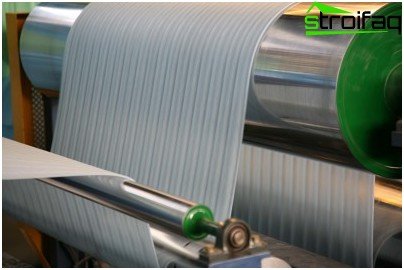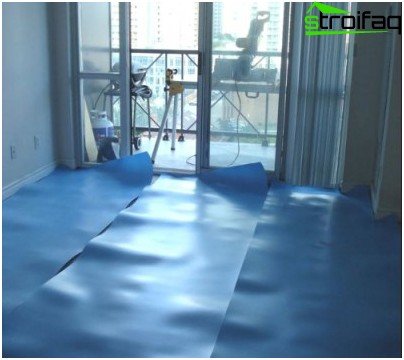How to lay a substrate under a laminate
Laminate flooring is a hard and relatively thin coating. Therefore, when laying it between the screed and the laminate, it is necessary to lay a substrate consisting of several layers. In construction stores, you can find substrates made of a wide variety of materials. Laying the substrate under the laminate is a fairly simple procedure, however, in this case, it is worth observing certain rules.
Content
- Why do I need a substrate
- Market assortment, selection
- Laying the substrate under the laminate
Why do I need a substrate
Using a substrate when laying a laminate allows you to solve several problems at the same time. The main advantages provided by the use of a substrate for a laminated coating are as follows:
- Soundproofing and soundproofing. The backing drowns out noises from neighboring rooms and footsteps.
- Thermal insulation. Such a floor, unlike a coating without substrates, allows even small children to comfortably sit on it in the winter. Of course, this is not a system of underfloor heating, however, the difference between the laminate that is laid on bare concrete and the laminated surface with the substrate is enormous.
- The absence of creaking when walking, which in any case occurs if the material is laid on a bare floor without a substrate. And if under the laminate gets small litter, garbage and sand, then walking on this floor will be extremely uncomfortable.
- Extending the useful life of a laminate. Moisture-resistant membrane integrated in the substrate makes the coating more reliable and resistant to liquid residues.
- Smoothing surface drops. Laminate flooring provides the best possible flatness.
Market assortment, selection
Laminate substrates of various types are available. One of the most common are polyethylene foam substrates..
This material is resistant to solvents and oils, is not afraid of moisture, mold and bacteria, is compatible with any building materials. Three types of substrates are distinguished: substrates made of gas-filled polyethylene, chemically and physically cross-linked polyethylene.

It looks like a substrate for a laminate
Substrates can be made from cork and composite materials. Such a coating is produced in rolls or in the form of cut sheets. The material is very resistant to rot, various parasites and mold. Among these substrates are rubber-cork products and bitumen-cork coatings. Composite material is also made of three layers, which contain a plastic film and polystyrene granules.
Extruded polystyrene foam substrates have high strength and low moisture absorption, so they are suitable for use in rooms like corridors, hallways and kitchens. Sound absorbing substrates are made of bitumen coated fiberglass..
Laying the substrate under the laminate
And now you should consider how to lay the substrate under the laminate. The surface of the floor on which the substrate will be laid must be clean, dry and even. To do this, it is necessary to thoroughly clean the surface of debris: first the floor is wetted with water, and then the garbage is removed. Next, the floor must be primed and sanded, eliminating cavities and small cracks.
After making sure that the surface is quite smooth, even, dry and clean, you can start laying the substrate. Pay attention to its thickness. The material must be selected with a thickness of 2-3 mm. But several layers of the substrate are not recommended..

The rolled substrate is laid in strips in the direction of the upcoming laying of the laminate, the strips can be fastened together with adhesive tape
Laminate flooring is usually packaged in rolls. Lay the coating in strips in the direction in which the laminate will be laid. The strips should be superimposed on each other with a gap of at least 20 centimeters and fastened together, for example, using adhesive tape. Fixing the substrate to the walls or the floor itself is not allowed.
If the substrate for the laminate looks like plates, then they should be laid so that the surface of aluminum foil (smooth side) is on top. Plates do not need to be attached to the walls and floor, and also to lay them on top of each other. They fit end-to-end, the joints are sealed with tape.
Now you know what happens under the laminate flooring and why this material should be laid under the laminate floor. Following the simple instructions for laying the substrate, you can create a reliable and durable base under the laminate, which will increase the life of the floor in your home.






